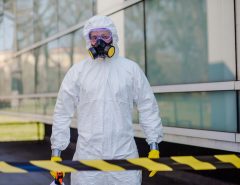The drug test method does not only use blood and urine samples. Some laboratories are now using hair and saliva samples to check for the presence of this banned substance. Several types of drugs examined in each test are marijuana, opioids, amphetamines, cocaine, to phencyclidine
This test is usually requested by some schools, hospitals, and workplaces as a special condition whether you are accepted or not to join them. There are many uses of this test and one can get information regarding it on laweekly.com.
There are several types and methods of drug testing that you can go through. But recent and advanced one is :
Drug test with hair
Examination using hair can be used to determine the use of drugs that are carried out over a long period, usually up to 90 days. This test can be used to determine the content of cocaine, marijuana, THC, opium, amphetamines, methamphetamine to ecstasy
Test procedure
For detecting drugs in hair will take about 100 grams of hair samples from the head or about 100 to 200 hairs that are cut close to the scalp. These samples are not easily faked because their collection will be supervised by many laboratory personnel.
Advantages and disadvantages
Some of the following are the advantages and disadvantages of the drug test method using hair:
- More expensive than a urine test
- Can detect substances used for a long time
- Drugs used not too long will be difficult to detect
It is known recently that, hair sprays and waxes can increase the level of alcohol metabolites in the hair so that if a persons hair is tested, the results will show that heconsumes alcohol. In one of the experiments conducted, if tested the hair of a person who had never drunk alcohol at all even then the result was negative. But after the volunteer used hair spray, the results were positive. Even his test results showed he had been consuming excessive amounts of alcohol for a long time. This can be dangerous for a test used for judicial purposes, but since scientists are aware of this limitation, they have procedures in place to prevent it.





